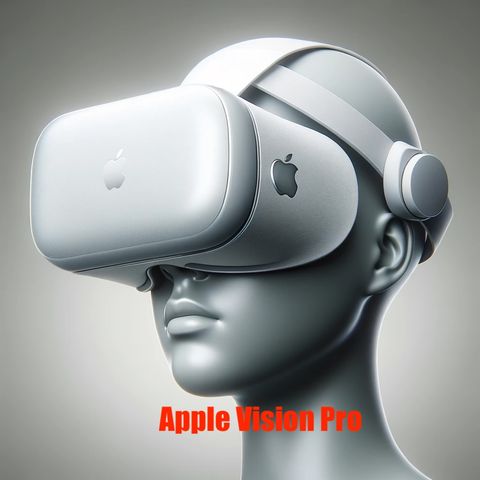
Contatti
Info
Apple Vision Pro Explained: A Dive into the Future of Computing Apple's Vision Pro, launched in June 2023, isn't just a new gadget; it's a bold foray into the world...
mostra di più- Project high-resolution visuals: Imagine crisp, vibrant content floating in front of you, seamlessly integrated with your surroundings.
- Track your eye movements and hand gestures: Vision Pro interprets your gaze and hand motions as natural controls, allowing you to manipulate holograms and navigate the virtual world intuitively.
- Map your physical space: Cameras and LiDAR sensors create a 3D understanding of your environment, enabling spatial interactions with digital objects.
- Connect with others: FaceTime calls transform into life-size, holographic interactions, fostering a sense of presence even in virtual spaces.
- Spatial Photos and Videos: Capture 3D memories that come alive when viewed on Vision Pro or compatible devices, offering a deeper level of immersion.
- EyeSight: Lets you maintain eye contact with others while using Vision Pro, fostering social connection even in the virtual world.
- Persona: Creates a realistic digital avatar that reflects your facial expressions and hand movements during FaceTime calls, enhancing the sense of togetherness.
- VisionOS: The dedicated operating system designed for spatial computing, offering intuitive controls and a unique 3D user interface.
- Limited app ecosystem: As a new platform, Vision Pro currently lacks a vast app library compared to established devices.
- Price and accessibility: With its advanced technology, Vision Pro comes at a premium price, potentially limiting its widespread adoption.
- Privacy concerns: Integrating cameras and sensors into such a personal device raises privacy questions that need careful consideration.

Apple Vision Pro Explained: A Dive into the Future of Computing Apple's Vision Pro, launched in June 2023, isn't just a new gadget; it's a bold foray into the world...
mostra di più- Project high-resolution visuals: Imagine crisp, vibrant content floating in front of you, seamlessly integrated with your surroundings.
- Track your eye movements and hand gestures: Vision Pro interprets your gaze and hand motions as natural controls, allowing you to manipulate holograms and navigate the virtual world intuitively.
- Map your physical space: Cameras and LiDAR sensors create a 3D understanding of your environment, enabling spatial interactions with digital objects.
- Connect with others: FaceTime calls transform into life-size, holographic interactions, fostering a sense of presence even in virtual spaces.
- Spatial Photos and Videos: Capture 3D memories that come alive when viewed on Vision Pro or compatible devices, offering a deeper level of immersion.
- EyeSight: Lets you maintain eye contact with others while using Vision Pro, fostering social connection even in the virtual world.
- Persona: Creates a realistic digital avatar that reflects your facial expressions and hand movements during FaceTime calls, enhancing the sense of togetherness.
- VisionOS: The dedicated operating system designed for spatial computing, offering intuitive controls and a unique 3D user interface.
- Limited app ecosystem: As a new platform, Vision Pro currently lacks a vast app library compared to established devices.
- Price and accessibility: With its advanced technology, Vision Pro comes at a premium price, potentially limiting its widespread adoption.
- Privacy concerns: Integrating cameras and sensors into such a personal device raises privacy questions that need careful consideration.
Informazioni
| Autore | QP-2 |
| Organizzazione | William Corbin |
| Categorie | Notizie di tecnologia , News - Affari , Videogiochi |
| Sito | - |
| corboo@mac.com |
Copyright 2024 - Spreaker Inc. an iHeartMedia Company
